A small bounce was expected to continue the new trading week. An outside day remains above the last low, and the higher high fits expectations.
Summary: The triangle wave count is now preferred. A small bounce up to about 1,279 may end within the next one or two days. Thereafter, look for overall downwards movement to a target at 1,216 – 1,211 as fairly likely.
The zigzag wave count will be discarded if price prints a full daily candlestick below the black (2)-(4) trend line on the zigzag’s daily chart.
For the short term, look for a bounce here. A downwards trend is now in place. Bounces are an opportunity to join the trend. The bounce may end about either 1,279 (more likely) or 1,290 (slightly less likely).
The target for this downwards wave is 1,216, and downwards movement may be limited to no lower than 1,123.08.
Always trade with stops to protect your account. Risk only 1-5% of equity on any one trade.
New updates to this analysis are in bold.
Grand SuperCycle analysis is here.
Last historic analysis with several monthly and weekly charts is here, video is here.
At this time, for the main monthly wave count, there are four weekly wave counts looking at cycle wave b as four different possible structures. Only two shall be published each day, one bearish and one bullish.
WEEKLY CHART – TRIANGLE
It is possible that cycle wave b may be an incomplete triangle. The triangle may be a contracting or barrier triangle, with a contracting triangle looking much more likely because the A-C trend line does not have a strong slope. A contracting triangle could see the B-D trend line have a stronger slope, so that the triangle trend lines converge at a reasonable rate. A barrier triangle would have a B-D trend line that would be essentially flat, and the triangle trend lines would barely converge.
Within a contracting triangle, primary wave D may not move beyond the end of primary wave B below 1,123.08. Within a barrier triangle, primary wave D may end about the same level as primary wave B at 1,123.08, so that the B-D trend line is essentially flat. Only a new low reasonably below 1,123.08 would invalidate the triangle.
Within both a contracting and barrier triangle, primary wave E may not move beyond the end of primary wave C above 1,365.68.
Four of the five sub-waves of a triangle must be zigzags, with only one sub-wave allowed to be a multiple zigzag. Primary wave C is the most common sub-wave to subdivide as a multiple, and this is how primary wave C for this example fits best.
Primary wave D must be a single structure, most likely a zigzag.
One triangle sub-wave tends to be close to 0.618 the length of its predecessor; this gives a target for primary wave D.
There are no problems in terms of subdivisions or rare structures for this wave count. It has an excellent fit and so far a typical look.
DAILY CHART – TRIANGLE
Primary wave D may be unfolding lower as a single zigzag, and within it intermediate waves (A) and (B) may be complete.
The target is widened to a $5 zone calculated at two degrees. This should have a reasonable probability.
Within intermediate wave (C), it looks likely that minor wave 2 may now be over. However, it would have been shallow. It is possible that minor wave 2 may continue further as a flat correction. If minor wave 2 moves higher, it may not move beyond the start of minor wave 1 above 1,364.36.
This wave count now expects to see an increase in downwards momentum as a third wave unfolds.
Add a base channel about minor waves 1 and 2. Along the way down, bounces for lower degree second wave corrections may be expected to find resistance at the upper edge of the base channel.
HOURLY CHART
The base channel on the daily chart is copied over to this hourly chart.
Minor wave 3 may only subdivide as an impulse. The target for minor wave 3 to end is equality in length with minor wave 1, because minor wave 2 was shallow. This target fits with the lower target for intermediate wave (C) to end.
Within minor wave 3, minute wave i may have been over at the last low. A bounce may unfold for minute wave ii. Targets are both the 0.382 and 0.618 Fibonacci ratios, with the 0.382 ratio favoured as the strong downwards pull of a third wave at two degrees may now force minute wave ii to be more shallow than otherwise.
So far minute wave ii may be a single zigzag. Minuette wave (a) fits best as a five. Minuette wave (b) remains above the start of minuette wave (a). At 1,278 minuette wave (c) would reach 1.618 the length of minuette wave (a). This is just below the 0.382 Fibonacci ratio at 1,279, giving a $1 target zone calculated at two degrees.
Minute wave ii may unfold over a very few days. It may not move beyond the start of minute wave i above 1,308.99.
WEEKLY CHART – ZIGZAG
Cycle wave b may be a single zigzag. Zigzags subdivide 5-3-5. Primary wave C must subdivide as a five wave structure and may be either an impulse or an ending diagonal. Overlapping at this stage indicates an ending diagonal.
Within an ending diagonal, all sub-waves must subdivide as zigzags. Intermediate wave (4) must overlap into intermediate wave (1) price territory. This diagonal is expanding: intermediate wave (3) is longer than intermediate wave (1) and intermediate wave (4) is longer than intermediate wave (2). Intermediate wave (5) must be longer than intermediate wave (3), so it must end above 1,398.41 where it would reach equality in length with intermediate wave (3).
Within the final zigzag of intermediate wave (5), minor wave B may not move beyond the start of minor wave A below 1,236.54. However, if it were now to turn out to be relatively deep, it should not get too close to this invalidation point as the lower (2)-(4) trend line should provide strong support. Diagonals normally adhere very well to their trend lines. If the (2)-(4) trend line is breached by a full daily candlestick below and not touching it, then this wave count will be discarded in favour of the triangle weekly wave count.
Within the diagonal of primary wave C, each sub-wave is extending in price and so may also do so in time. Within each zigzag, minor wave B may exhibit alternation in structure and may show an increased duration.
Within intermediate wave (1), minor wave B was a triangle lasting 11 days. Within intermediate wave (3), minor wave B was a regular flat lasting 60 days. Intermediate wave (5) is expected to be longer in price than intermediate wave (3), and it may also be longer in duration, and so minor wave B within it may also be longer in duration.
This weekly chart sees the upwards wave labelled primary wave A as a five wave structure. It must be acknowledged that this upwards wave looks better as a three than it does as a five.
DAILY CHART
Minor wave B may be a double zigzag, which may now be complete.
The first zigzag in the double is labelled minute wave w. The double is joined by a three in the opposite direction, a double zigzag labelled minute wave x. The second zigzag in the double is labelled minute wave y, and it is deepening the correction, which is the purpose of second zigzags.
Minute wave y may end at support at the lower black (2)-(4) trend line, which is copied over here from the weekly chart. This is the lower diagonal trend line.
There are now two daily candlesticks with lower wicks overshooting the (2)-(4) trend line. This is acceptable for this wave count, but a breach of this line is not. If a full daily candlestick prints below the line and does not touch it, then this wave count will be discarded.
TECHNICAL ANALYSIS
WEEKLY CHART
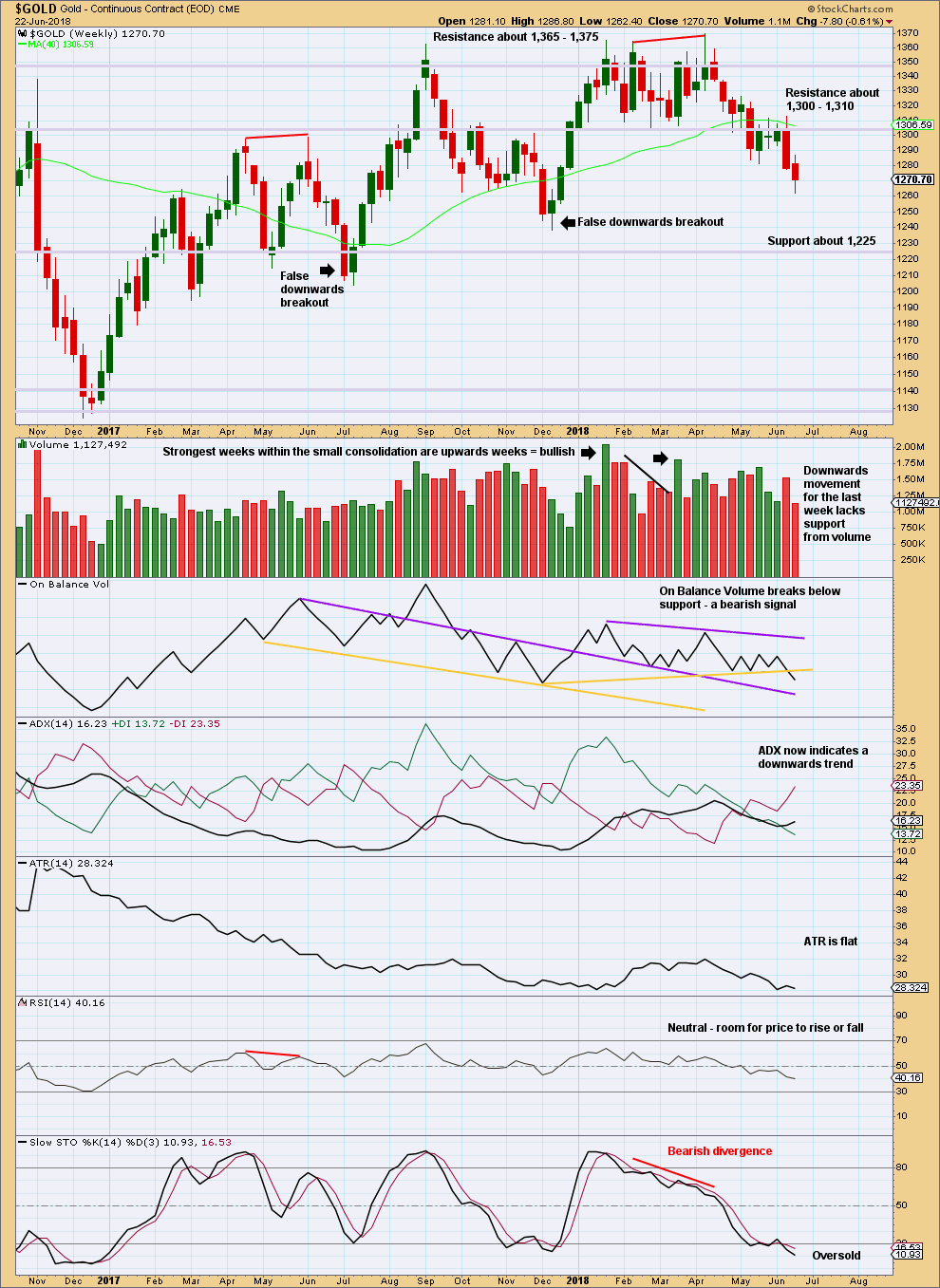
Click chart to enlarge. Chart courtesy of StockCharts.com.
On Balance Volume gave a reasonable bearish signal last week. The yellow support line, which is breached, has reasonable technical significance: it is reasonably long held, has been tested at least three times before, and has a shallow slope. This supports the new Elliott wave count, which expects more downwards movement from price here.
Stochastics may remain oversold for several weeks when Gold has a strong bear trend. There is a good example of this on the left hand side of the chart. Only would Stochastics indicate an end to the trend when it has been oversold and then exhibits bullish divergence with price. That is not the case here.
DAILY CHART
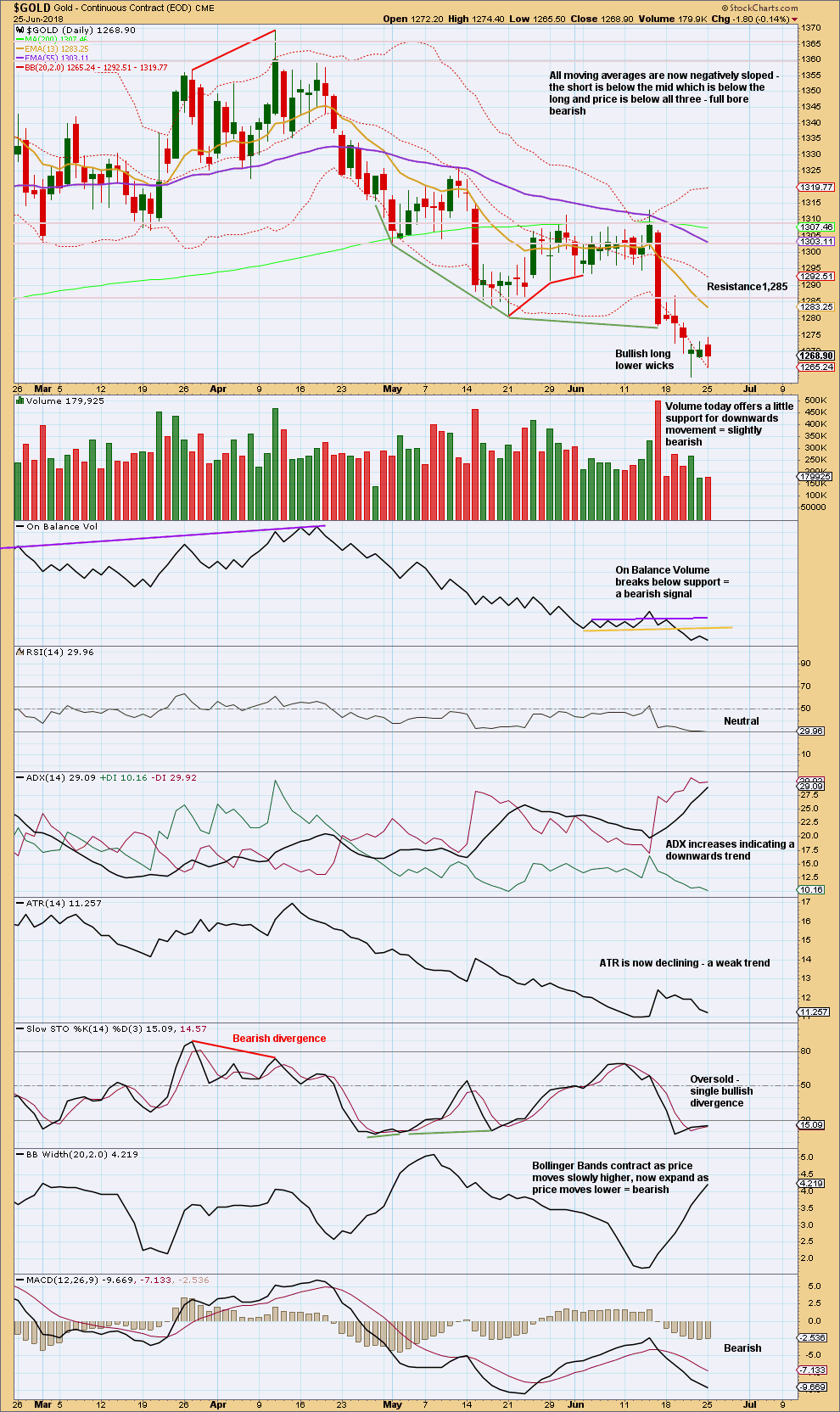
Click chart to enlarge. Chart courtesy of StockCharts.com.
With a bearish signal from On Balance Volume at the weekly chart level, it now looks like the downwards breakout this time may be true and not false.
On Balance Volume at the daily chart level remains bearish and supports the new Elliott wave count.
Overall, this chart remains very bearish.
GDX WEEKLY CHART
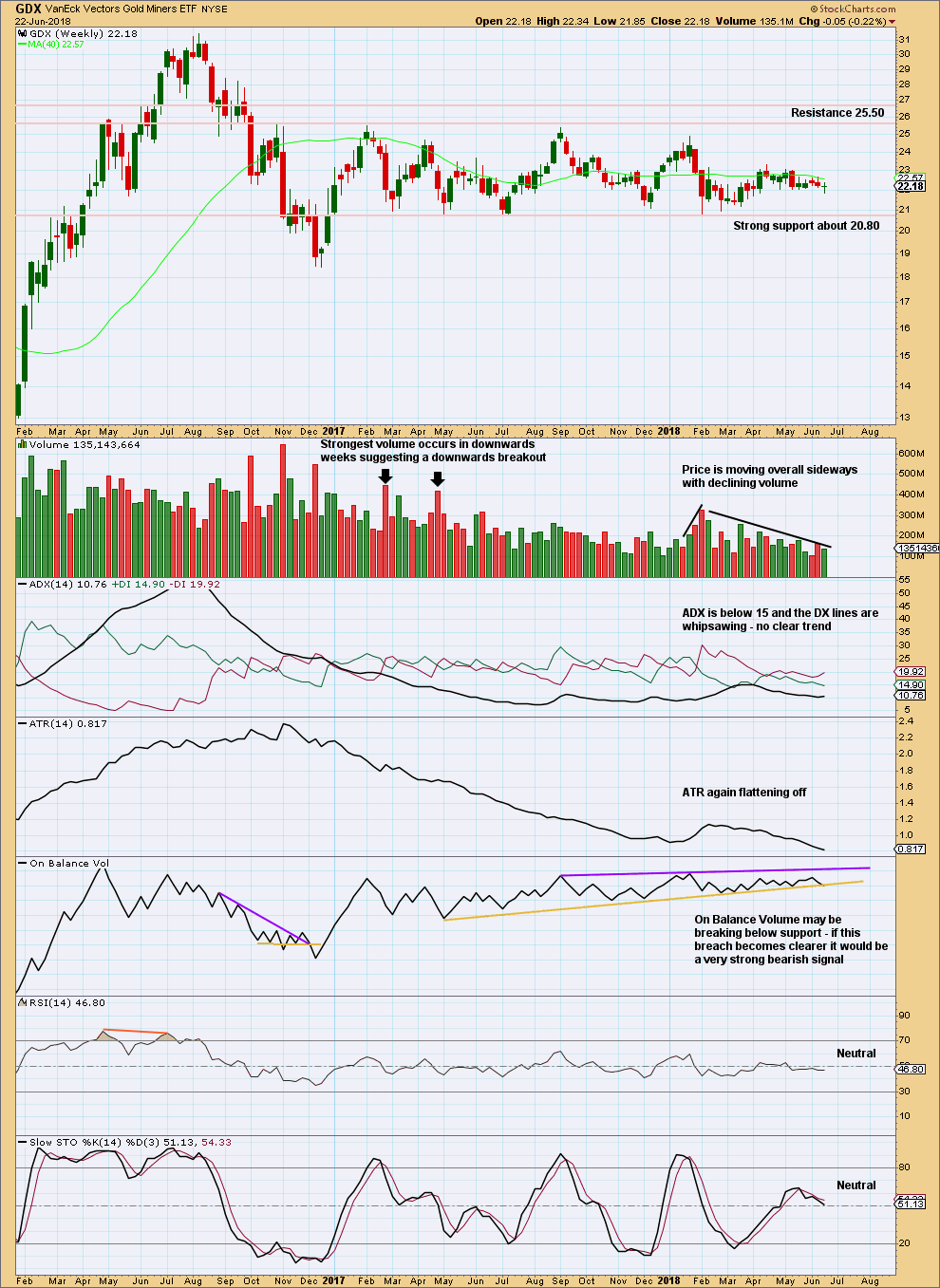
Click chart to enlarge. Chart courtesy of StockCharts.com.
Support about 20.80 has been tested about eight times and so far has held. The more often a support area is tested and holds, the more technical significance it has.
In the first instance, expect this area to continue to provide support. Only a strong downwards day, closing below support and preferably with some increase in volume, would constitute a downwards breakout from the consolidation that GDX has been in for a year now.
Resistance is about 25.50. Only a strong upwards day, closing above resistance and with support from volume, would constitute an upwards breakout.
A downwards week last week completes a small green doji. Overall, this is neutral.
The yellow support line on On Balance Volume has a reasonable slope, but it is very long held and has been tested multiple times. This line has very strong technical significance. If it is clearly breached this week, that would provide a very strong bearish signal for GDX.
GDX DAILY CHART
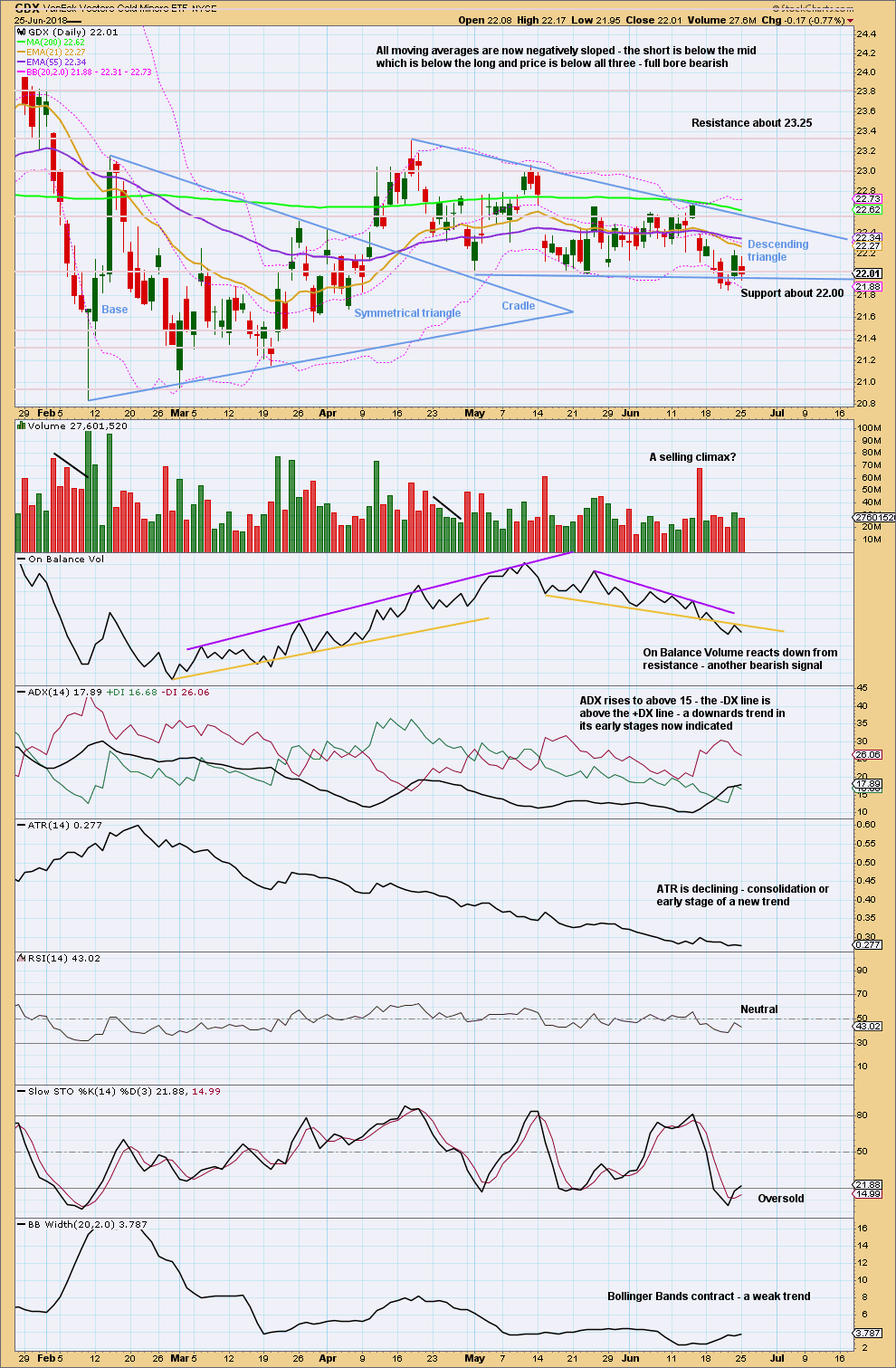
Click chart to enlarge. Chart courtesy of StockCharts.com.
On Balance Volume is bearish at the daily chart level.
Overall, this chart is bearish to neutral.
Published @ 07:50 p.m. EST.

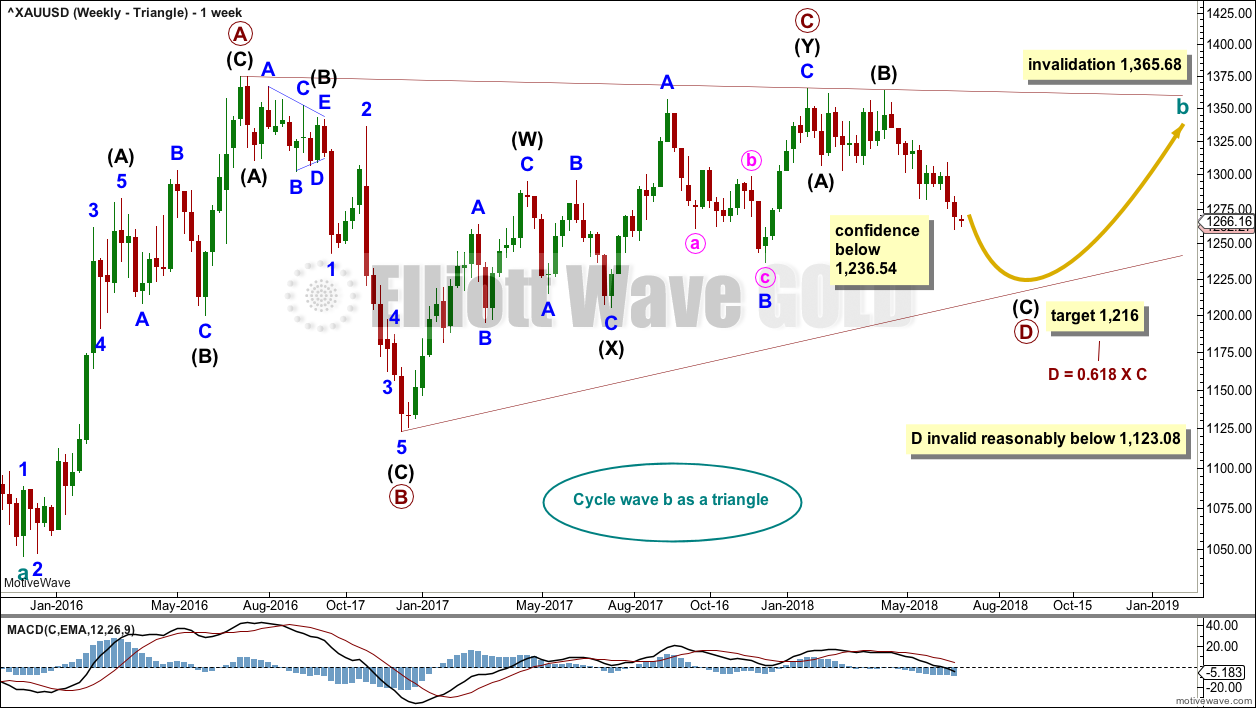
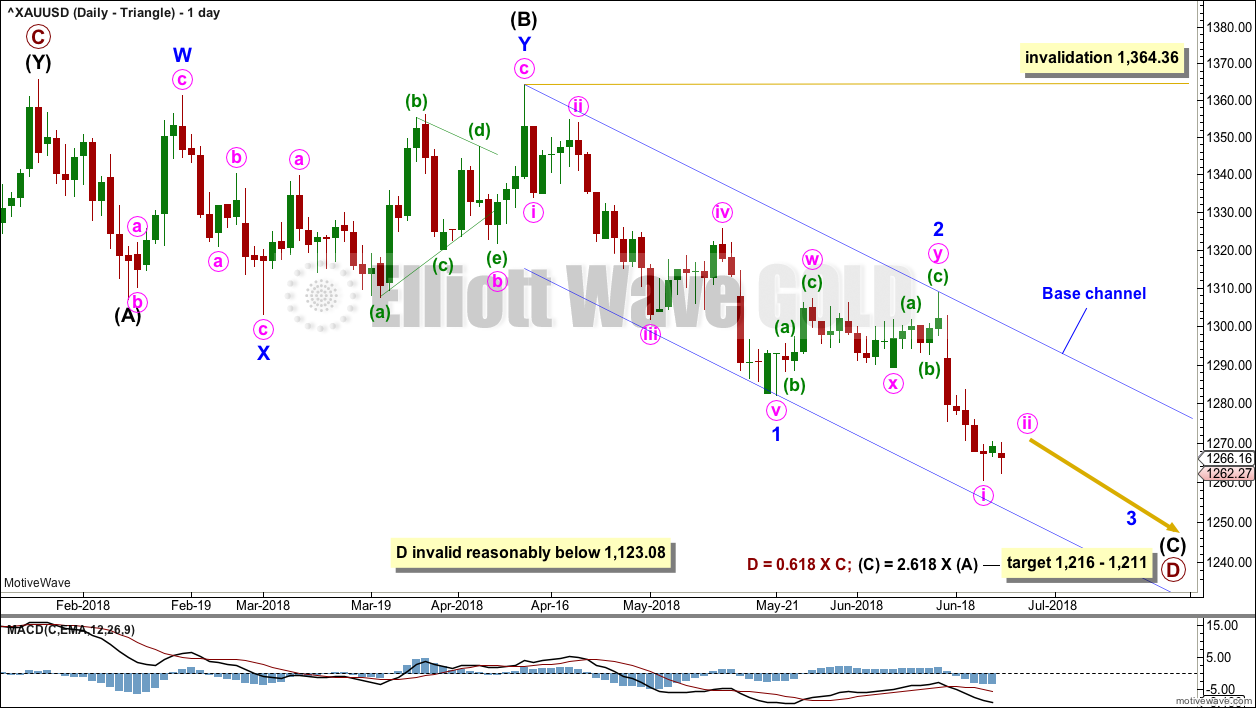
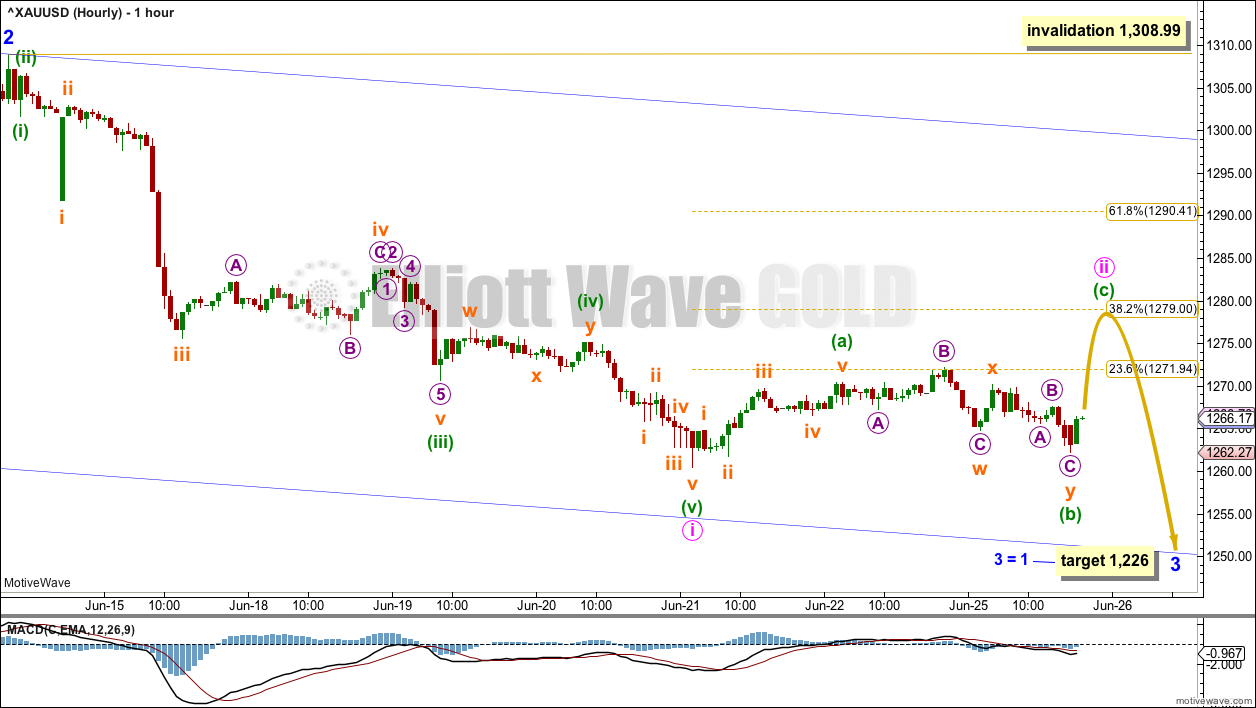
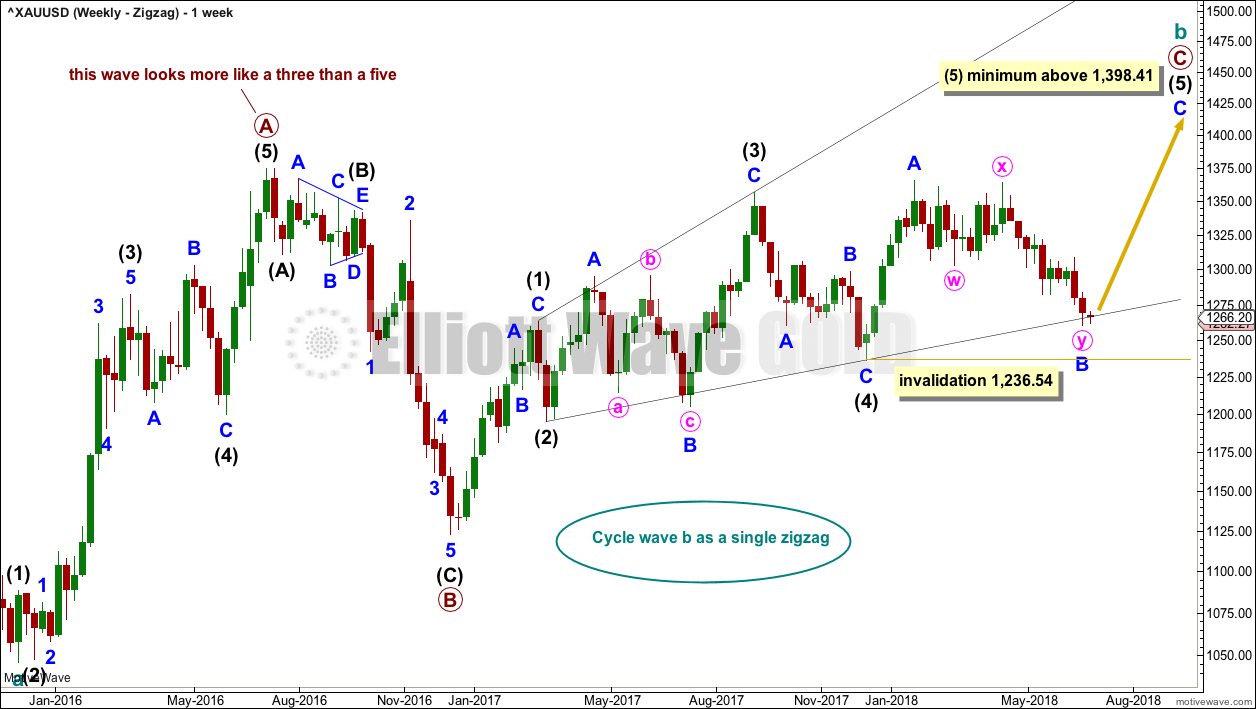
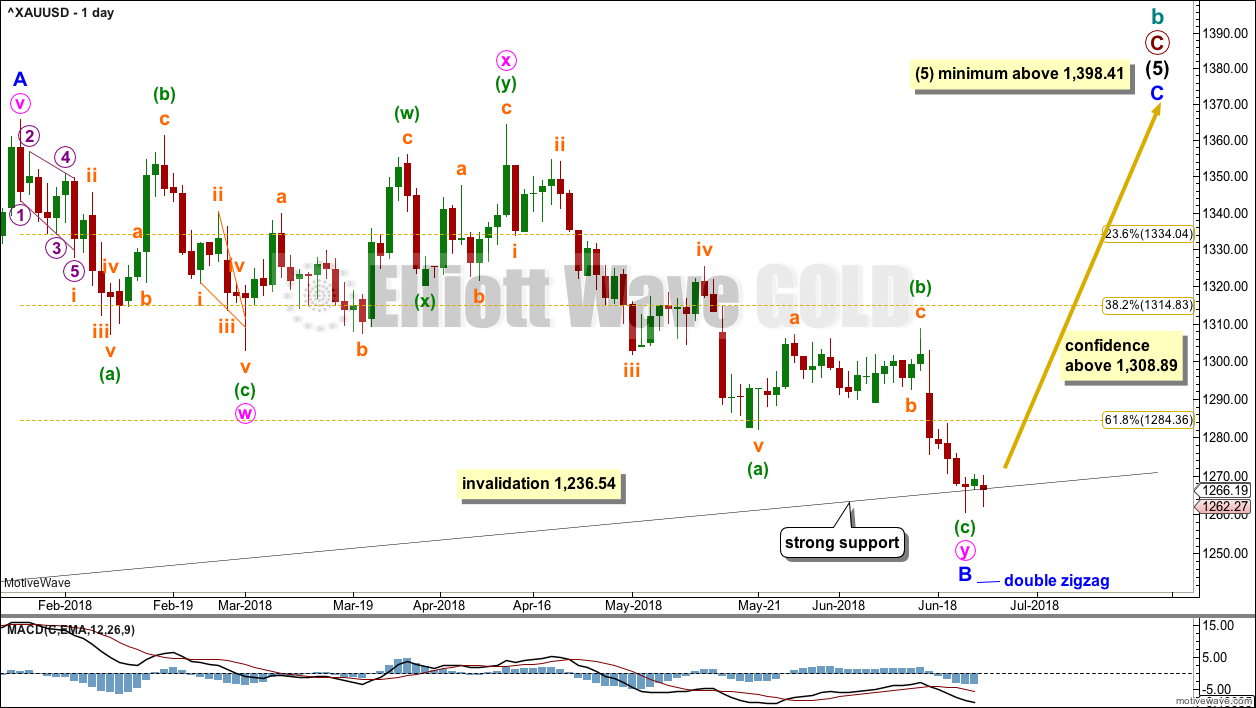
There are two possibilities today.
With MACD showing some increase in momentum, I’m going to first expect this may be the more likely possibility. Minute ii may have been very brief and shallow. That means strong downwards movement may be right ahead.
The other possibility is that minute ii may be continuing as an expanded flat, and this new low today may be minuette (b) within it. If there is some reasonable weakness in today’s downwards movement then this option would be indicated. Let us see how indicators perform when the session is closed. At the least, it will be an alternate.
As for my labelling of the start of minute iii, after some time looking on the five minute chart this may well change.